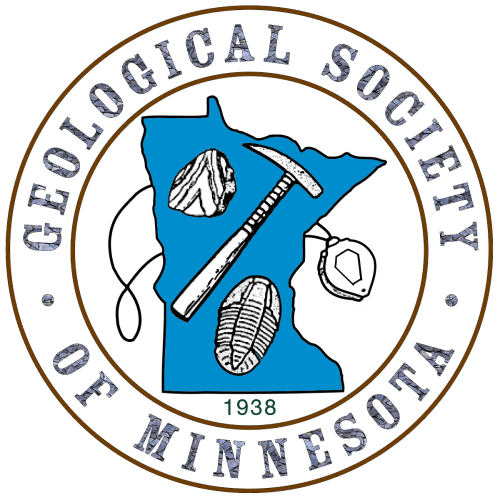Road Marker Information
Description:
Link to Alexander Ramsey Park.
Enter Road Address in your cars GPS:
Ramsey Park – Cansayapi Park-, 99 E Oak St, Redwood Falls, MN 56283
OR
Enter Geographical Coordinates in your cars GPS:
Degrees Lat Long: 44.552296, -95.124669
Latitude: 44°33’08.3″N
Longitude: 95°07’28.8″W
Country: Redwood County
Where Found:
Marker is in Redwood Falls, Minnesota, in Redwood County. Marker can be reached from East Oak Street, 0.8 miles west of North Lincoln Street. Marker is in a wooded area along the Redwood River at the Paul A. Asleson Lower Park Shelter Area in Alexander Ramsey Park.
Marker Number:153
Marker Composition: Stone with Bronze plaques
Text on Marker:
GEOLOGY OF THE REDWOOD FALLS REGION
Exposed in the rocky hillocks of the Minnesota River valley between Montevideo and Morton are some of the oldest rocks on earth. The pink-and-black-banded rock used for the pedestal of this tablet is a metamorphic rock called gneiss (pronounced “nice”). This gneiss formed when great and prolonged heat and pressure deep in the earth was applied to and altered earlier rocks. Because the change or metamorphism was so intense, the character and age of the original rocks have been obscured.
This metamorphism occurred about 3.6 billion years ago, probably during the creation of an early continental mass. Small pieces of continental crust, such as that containing the original rock of this gneiss, collided and stuck together to form proto continents. As the continental pieces collided, their margins were com-pressed, producing the heat and pressure that caused the metamorphism. This process operated for billions of years, building larger continental masses like those we see today.
Technically, this rock is named Morton Gneiss, after the village of Morton where it is well exposed. Commercially, it is known as Rainbow or Tapestry granite. Gneisses have made popular building and monument stones throughout the world.
North of this tablet, across the Redwood River, a bank of residual clay 23 meters high is all that remains of some gneiss that completely decomposed. This type of deep and intense decomposition is characteristic of weathering in tropical climates. Such a climate existed here about 100 million years ago when the North American continent, during its very slow drift across the sur-face of the earth, was located at subtropical latitudes (30°— 60° N). Continental drift is part of the dynamic global process of plate tectonics and has probably operated throughout most of earth’s history.
Erected by the Geological Society of Minnesota in partnership with the Minnesota Department of Transportation and the Minnesota Geological Survey. 1998
Region: South Central/West Region
Information Needed:
- Marker Images
Condition of Marker: Good
Do it Yourself Region: Minnesota River Valley
Verification: Done – Becky


